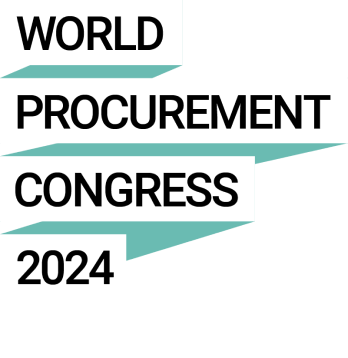One path leads to the function becoming a highly automated, scaled-down entity on the periphery of the organisation. The other a function operating as a critical business partner, leveraging technology to inform and execute on a diverse range of strategic priorities.
This second path, from tactical, back-office function to strategic business partner, is one paved by data. Our ‘Data-driven decision making report’ places the spotlight on the organisations making this journey, profiling their leading practices.
These leading functions are crafting out a new value proposition with three critical elements;
A LOWER-TOUCH, ‘SELF-SERVICE’ PURCHASING MODEL
Procurement can reduce its administrative and transactional burden by using data to inform and optimise a self-service approach. How does this change procurement’s value proposition:
- Resource can shift from transactional and administrative tasks to more strategic activities.
- Improves users’ experience of purchasing platforms.
- Reduces process cycle times.
- Enhances procurement’s return on investment.
ENTERPRISE INSIGHT ENGINE
Enabled by a broader set of data sets and a remit to focus on enterprise-wide initiatives, procurement teams can identify opportunities to deliver value beyond savings. How does this change procurement’s value proposition:
- Advisory role extends beyond cost reduction to address enterprise-level operational efficiencies, product/service enhancement and resilience.
- A proactive partner in company-wide strategic planning, contributing to sustainable top-line growth through expertise in supplier-enabled innovation, sustainability and resilience
VALUE CHAIN COORDINATOR
Procurement can strengthen its position as an interface between suppliers and the business, using data to identify and manage partners and opportunities. How does this change procurement’s value proposition:
- Proactively align suppliers with enterprise objectives.
- Facilitating interactions between internal and external stakeholders.
- Pipeline for supplier innovation to enter the business.
The practices to enable these aspects are wide-ranging, but relied on three critical foundations- what we might refer to as the first rungs on the data-driven ladder;
Generate a compelling vision: Elevate the strategic intent of procurement analytics. Extend objectives beyond cost-minimisation to explore how procurement analytics can drive enterprise priorities around areas like risk, sustainability and product enhancement. This will build a stronger, more compelling business case for investment.
Digital leadership teams should align their data strategy with the strategic priorities of the enterprise and make that alignment as clear as possible. It is far more difficult for stakeholders to reject an initiative that directly addresses stated objectives of the enterprise and signals the pivot the function is taking towards business partnering.
When designing this vision, digital leaders should look at opportunities where procurement can deliver unique insights for the organisation. Differentiating the insight the function can provide will drive its advisory capabilities. Knowledge of local markets and access to category-specific information can be central to this differentiation. When exploring sales strategies for new markets, or identifying gaps for new products, procurement is often in the strongest position to inform the organisation’s approach.
Define ownership: Establish visibility into the projects, processes and architecture underpinning analytics. To deliver a data strategy, digital leadership teams should establish responsibilities around executive sponsorship, project team roles and stakeholder contributions. This is particularly true where change management and communications are concerned, as these areas are often overlooked.
Digital leaders should also commit to a data-mapping exercise as a foundational step towards building a data strategy. Successful data improvement strategies are built from an understanding of the information that staff of varying seniority use to make decisions. This awareness can be built up over two layers of investigation, the first exploring where data is stored, collected and accessed and how it is currently used. The second is a gap analysis of what data would be useful to have, where it can be acquired and any restriction placed from a regulatory or resource perspective on that use.
Build partnerships: Leading procurement functions differentiate themselves through strong internal digital partnerships. Starting with IT, finance and any established data management teams, digital leaders within procurement should take a proactive approach to collaboration. This alignment extends to infrastructure, with procurement ensuring it is a consulted partner, rather than a passive participant for a critical area with significant implications for the scope of analytics.
When establishing its role as a consulted partner, procurement should push for the design of architecture which prioritises the availability of data throughout the enterprise to extend the scope of procurement analytics.
Find out more about Procurement Leaders membership.

















